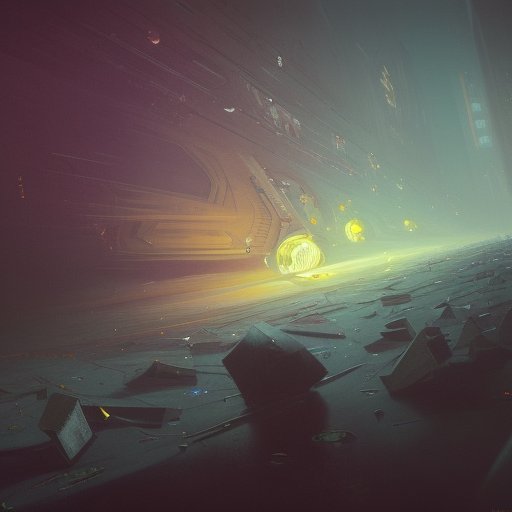
Space debris is a serious problem that has only grown with the advancement of technology. Neglecting nature by leaving outdated tech in space has led to dire consequences. Satellites, space exploration, and our planet are all at risk from space debris. It is time to address this issue through new technology and solutions for cleaning up debris. By doing so, we can protect our planet and ensure a brighter future for space exploration. The potential for positive change is immense, and it is up to us to take action. In this article, we will explore the perils of space debris, the role of outdated tech and neglect, potential solutions, and the future of space debris.
I. Introduction
Space debris. Ah, the bane of every astronaut’s existence. And it’s only getting worse. Neglecting nature by leaving outdated tech in space has led to dire consequences for our galaxy. It’s time to talk about the elephant in the galaxy and come up with solutions before it’s too late.

Have you ever wondered what happens when outdated tech neglects nature? Let’s take a closer look at the problem of space debris. From non-functioning satellites to abandoned rocket stages, space debris is a real issue that we need to address.
Space debris poses a significant threat to satellites, which are crucial to many aspects of our daily lives, from communication to GPS. Imagine trying to use an ATM or order an Uber with no GPS. It’s not a pretty picture. And with more space missions being launched every year, space debris is only going to become more of a hindrance to space exploration.
But it’s not just technology that’s at risk from space debris. Our planet is also in danger. If a piece of debris falls to Earth, it can cause significant damage to infrastructure and even harm human life. And let’s not forget about the Amazons and their biodiverse habitats.
We can’t keep neglecting the problem of space debris. We must address it head-on before it’s too late. In the following sections, we’ll explore the perils of space debris, the role of outdated tech and neglect, potential solutions, and the future of space debris. So buckle up, grab onto your computer screen, and let’s dive into the deep unknown of space debris.
II. The Perils of Space Debris
Space debris is a menace that has grave consequences on our galaxy. In this section, let’s explore the perils of space debris and how it affects our satellites, space exploration, and our planet as a whole.

With space missions being launched every year, the amount of space debris is only going to increase, leading to more collisions with spacecraft and satellites. Even a small piece of space debris traveling at high speeds can cause catastrophic damage to a spacecraft. Not to mention, these collisions can create more debris, leading to a vicious cycle.
We all rely on satellites for a variety of things from GPS navigation to weather forecasts to financial transactions. But with the growing threat of space debris to our satellites, it puts these crucial services in jeopardy. The more congested the space around Earth becomes, the greater the chance of collision or damage to functioning satellites.
It’s not just satellites that are at risk; space exploration is also affected by space debris. With increasing space debris, it puts our future space missions in peril. Imagine the tragedy if we lose potential discoveries and advancements because of space debris.
But the danger of space debris doesn’t just stop at technology. If a large enough piece of debris falls back to Earth, it can cause significant damage to infrastructure and even harm human life. We can’t keep turning a blind eye to the problem of space debris. We must tackle it before it causes more harm to our planet and future space exploration.
In the next section, we’ll examine how outdated technology contributes to the problem of space debris and how we can start cleaning up and protecting our galaxy.
III. Outdated Tech and Neglect
Outdated tech and neglect have played a vital role in the issue of space debris. Whether it’s rockets, satellites, or space shuttles, all have left behind a trail of debris that orbits the Earth. And as technology advances, older pieces of tech are left behind, lurking in the void of space.

The problem with space debris is that it doesn’t just disappear; it continues to orbit Earth until it falls back down, which can take decades. And with more launches and discarded space tech, the problem is only going to get worse.
But why does this happen? Part of the issue is the lack of regulation around space debris. There are no strict rules in place to monitor the amount of debris left in space, and as a result, companies are free to launch rockets and satellites with little regard for their disposal.
Furthermore, the lack of investment in cleanup technology has made it challenging to address the problem. No one wants to go into space and clean up the debris – it’s expensive, difficult, and potentially dangerous. So the debris continues to orbit Earth, silently waiting for its chance to strike.
So what’s the solution? The first step is to create stricter regulations around the launching and disposal of space tech. Companies must take responsibility for what they leave in space to minimize the risk of debris. But more than that, we need to invest in new technology to clean up the debris already orbiting Earth.
Some ideas include using lasers to alter the trajectory of debris or capture it with large robotic arms. However, these solutions require investment and research, which is currently lacking.
In closing, the issue of outdated tech and neglect might seem like a small issue in the grand scheme of things, but it could have devastating consequences for our planet and space exploration. We must take action now before it’s too late.
IV. Solutions for Space Debris
Space debris is a problem that has been ignored for too long. But fortunately, there are solutions. The first solution is to simply clean up the debris. There are already plans in motion for this, such as using a net to capture debris or using lasers to vaporize it. It’s like cosmic housekeeping!

Another solution is creating new technology that can help prevent space debris. For example, developing satellites with better fuel efficiency or propulsion systems that can move them out of the way of incoming debris. Think of it like creating a self-driving satellite!
We can also prevent the creation of more space debris by properly disposing of old satellites and rocket stages. This means bringing them back to Earth or safely shooting them away from populated areas. It’s like recycling for the galaxy!
But tackling the issue of space debris requires a coordinated effort from all countries involved in space exploration. We need shared policies and regulations to ensure that everyone is on the same page. Think of it like a space United Nations!
Lastly, education is key. We need to make sure that people understand the consequences of leaving outdated tech in space, and the importance of proper disposal methods. It’s like teaching a child to clean their room!
The battle against space debris won’t be easy, but it’s one that we must win. With the solutions mentioned, we can take on this challenge and ensure a brighter future for space exploration. By cleaning up our mess and creating new technology, we can make space debris a thing of the past. So, let’s work together and get to it!
V. The Future of Space Debris
The future of space debris hinges on the actions we take today. It’s up to us to make a positive change for the sake of space exploration and our planet.

Many potential solutions for cleaning up debris are being explored, from massive nets and harpoon-like devices to orbital debris collectors. And while the cleanup process may take some time, it’s critical that we begin the work now.
But it’s not just about cleaning up the mess we’ve made. It’s about preventing future space debris from being created in the first place. New tech is stepping up, from LIDAR and other sensors that can detect debris to innovative designs for new space vehicles that won’t leave a trail of debris.
Education plays a crucial role in this as well. It’s essential to educate people about the dangers of space debris and the importance of proper disposal of space equipment. Countries all over the Galaxy are coming together to address the issue at a global level, resulting in protocols and agreements governing the disposal of space equipment.
It’s an exciting future for space debris. And who knows what new technology or techniques will be created in the years to come. As we continue to explore space and push the limits of technology, it’s crucial that we think about the impact that our actions have on the galaxy.
The potential for positive change is immense. The future of space debris doesn’t have to be bleak. The solutions are out there, and it’s up to us to embrace them. In doing so, we can protect our planet and pave the way for a brighter future for space exploration. The future is now, and it’s up to us to make it a bright one.
VI. Concluding Thoughts
As we look to the future, it’s clear that we must take action to address the problem of space debris. We can no longer neglect the impact our actions have on nature, especially when it comes to space exploration. Technology has revolutionized the way we navigate the galaxy, but it’s important to use it responsibly.

We need to come up with innovative solutions for cleaning up debris and preventing its creation in the first place. From revising laws and regulations to launching more responsible space missions, we have the power to make a difference.
At the heart of the issue is our relationship with technology. We must acknowledge that outdated tech and neglect have contributed to the problem of space debris. We need to use technology as a tool to protect our planet and work in harmony with nature. It’s easy to think that we’re invincible in the face of the cosmos. However, we are tiny, almost insignificant in comparison to the gargantuan universe we live in. We need to show more humility, more empathy and act as responsible stewards of the galaxy.






